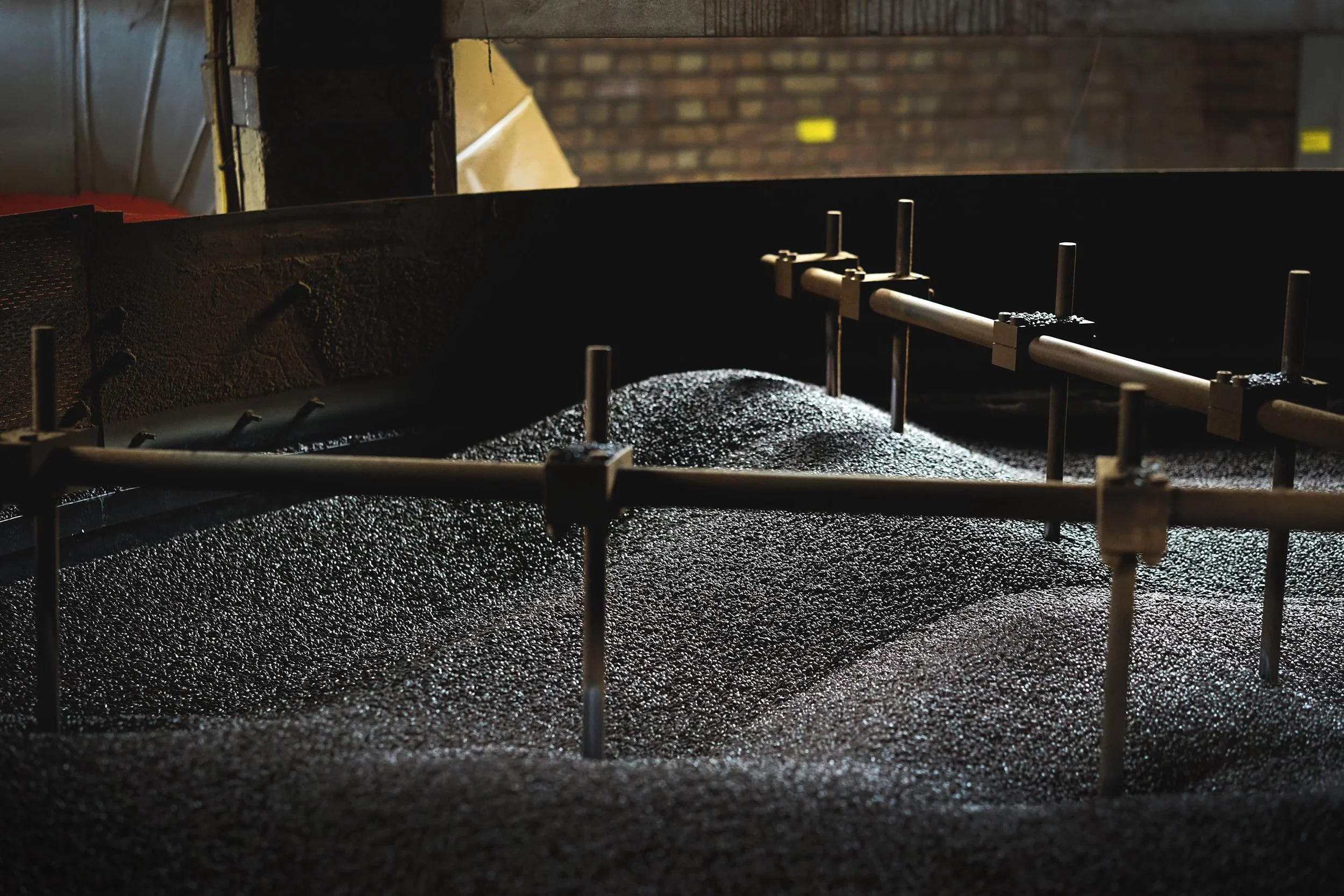The Going Through — Gale Beer, Saison’s Lost Yorkshire Cousin
It pours from an unmarked swing-necked brown bottle, a clear liquid with a light effervescence which disappears quickly in the glass. It smells like gingerbread, but tastes either sweet when young or dry when a week or so old; reminiscent of aniseed and heather, while also not being quite like either. This unassuming homemade drink is gale beer.
For centuries, gale beer was a staple product of the dales of the historic county of Cleveland, in what is now the North Yorkshire Moors. Made from myrica gale, or bog-myrtle, a sweet-smelling shrub which grows wild in wetlands and bogs, it was a staple of farmhouse kitchens in the summer months, and recipes were precious heirlooms passed down from one generation to the next by oral tradition.
The reason why you have likely never heard of it is a story of changing tastes, industrialisation and man’s relationship with the environment which, over the past two centuries, have altered our society beyond recognition, even in an area apparently as timeless as the Yorkshire countryside.
The landscape of the area between the Vale of York and the Tees Valley is one of great natural beauty. Vast expanses of heather moorland surround isolated stone built villages, farmsteads, stone crosses and grazing sheep like a foaming sea of red and green. Much of the moors is now a national park, but one that wears the scars of old industrialisation more obviously than the Lake District or the Yorkshire Dales.
““The isolation of the moorland villages encouraged self-sufficiency.””
It is a wild and insular place with a long history. Bronze Age barrows, Roman forts, medieval abbey ruins and the husks of 19th century mining workings dot the landscape like the currants in a rough ‘turf cake’—the local relation of the scone. The isolation of the moorland villages encouraged self-sufficiency, and, for far longer than the urbanising industrial areas to the north and the agricultural areas to the south, old traditions were preserved.
***
Unlike a crisp Belgian saison or herbal Scottish froach, this drink is not so much a beer style as an artefact from a vanished rural culture. Today it is a historical footnote, with only the faintest imprint on modern Yorkshire. Although from the area myself, neither my parents, nor my grandparents are familiar with the drink. So, as a keen homebrewer and beer drinker, I set out to change that.
The art of brewing has been practised in the Moors for thousands of years. In the medieval period, enterprising villagers would commonly brew beer for sale in their own houses. When schoolteachers Joan Inghilby and Marie Hartley were researching their seminal history of the folk traditions of the moorlands in the late 1960s, they still found farmers making gale beer to drink “in the hay and harvest fields.”
Brewed in farmhouse kitchens with no more than ordinary copper kettles and tin bowls, such skills were passed down through families, not books. Much like ginger beer, itself a Yorkshire innovation, the drink contained neither barley nor hops. Recipes differed between valleys, and even between households in the same village.
Illustrations by Cris Tamay
When I speak to Jennifer Smith, curator at the Ryedale Folk Museum in Hutton le Hole, she quickly summarises the extent of historical knowledge on this forgotten harvest tipple. “Gale beer gets a scant mention in some of the local history books we use most commonly here,” she tells me. “Perhaps there isn’t much to know about it.”
An experienced brewer of the drink herself, she gave me two recipes: one from Hutton Le Hole itself, and another more “general,” and apparently from the wider region. The recipes differ quite remarkably. The first, recorded by the founder of the museum Bert Frank with guidance from his mother in the early twentieth century, specifies “10-12 sprigs of fresh young gale” and sugar only.
The second calls for a more haphazard “fistful of gale” as well as a large amount of ginger syrup and lemon. In both, a slice of toast is spread with bread yeast and then floated on top of the cooled wort. The hygiene ramifications of this addition, reminiscent of Eastern European Kvass, might give some modern brewers a heart attack, but it must have been effective. After hours or days, the solution is strained with cheese cloth, bottled and drunk.
Thanks to tips provided by Jen, I soon found a patch of gale in a nearby bog. Dark green in colour, with small, diamond-shaped leaves, the shrub stands out from its rugged moorland surroundings, and when bruised between the fingers emits a distinctively sweet odour. When I got home, I blanched a bundle of the leaves in boiling water with sugar, and let it cool. I added yeast—ale yeast as opposed to the bread yeast of the traditional recipes. It all went into a large bowl covered with cling film.
Several mysteries remain around Gale Beer. Who first created it, and where? Why is it not nestled in the fridge behind every pub bar in the Moors, or a famous regional delicacy? One clue to its disappearance is the specificity of its ingredients. Bog Myrtle is not a rare plant, appearing all across the UK and Europe, but it is not easily cultivated.
A wild plant, it often featured in the herbal gruit which flavoured beers from low countries before hops became commonplace in brewing. The shrubs require the specific soil acidity of bogland areas, which although once abundant, are increasingly scarce today.
Nothing, however, is stopping modern British brewers from utilising gale as a flavouring agent. In an age in which ‘natural’ beers and wines, and fermented drinks like kombucha are gaining popularity, this seems like it has potential. In 2017, the now sadly defunct Treboom brewery in Shipton-by-Beningbrough near York made a wheat beer flavoured with Gale named “Myricale,” and acknowledged it was a homage to the style. So why has it died out?
““Perhaps the most remarkable aspect of Gale Beer then is not its disappearance, but its lingering survival.””
Maybe it was a case of changing tastes. For the modern drinker used to ale or lager, such a floral, frothy drink may be unpalatable. Ivan Day, a celebrated historian of food and drink, certainly thinks so. He once convinced his local brewery in Cumbria to brew a gale flavoured beer as a guest ale. “No one liked it!” He explains, as we sip a delicious sample of Jen’s hazy gale beer on an overcast summer day in Hutton le Hole.
I was ready to agree with the Cumbrians about my own effort. Two days of bubbling fermentation had left the batch smelling sweet and fruity. I strained off the sludgy remains of the leaves and yeast and decanted the cloudy and rather unappetising mixture into bottles. Much like a saison, or homemade ginger beer, the drink is bottle conditioned. All there was to do now was wait.
***
The industrialisation of the 19th century swelled the populations of the moorland valleys to an unprecedented size. To this day, many streams run red due to iron ore. In Rosedale and surrounding valleys, miners built rows of terraced houses, attended chapels, and tended large kilns. Pit railways criss-crossed the banks of heather. Most newcomers came from far away, with little knowledge of local traditions.
The boom was not to last. By the mid-20th century, the mines had closed, the kilns were ruins, and track-beds had become footpaths. The drinking culture of the miners, however, remained. Commercially produced cask ale flourished in the area. Now pub sales are dominated by bitters from breweries like Theakston, or the Cropton Brewery. Gale beer simply no longer features in this local scene.
In an agricultural community with little commercialised food and drink, gale beer was a cheap and refreshing beverage. But tastes and lifestyles don’t always move in one direction. If this tradition was sidelined by industrialisation, it was finally destroyed by the dawn of modern farming.
A single farmer in a combine harvester now accomplishes the work of hundreds of thirsty farmhands. With a declining connection to the land, the knowledge of identifying and foraging for plants has also disappeared. How could the beverage compete with the soft drinks of the nearby supermarket, which don’t require the specialist knowledge or effort of a fermented product?
Perhaps the most remarkable aspect of gale beer then is not its disappearance, but its lingering survival. Hundreds of historical drinks must have come and gone. Yet through the peculiar isolation of the Moors, the legend survived into the twentieth century. Without custodians of the little knowledge that does remain, such as at the Ryedale Folk Museum, we would know nothing at all.
The day arrived when my beer was ready to taste. Inspecting one of the swing-top bottles revealed that the clouds of yeast had been replaced by a surprisingly clear liquid, and the hiss as it was opened was encouraging. At around 4% ABV, it was now agreeably dry and refreshing. Gale beer provides an example of how radically changing lifestyles and environmental conditions can alter our food and drink in only a few decades of historical change.
At a time when drinkers are more adventurous than ever before, it also cries out for revival. The current residents of the moors can buy German weißbier and Australian Chardonnay in local supermarkets, but they cannot yet buy gale beer. Reforging that link between food and place seems to be the future. For now, to drink it is to taste a memory of what once was: a way of life that only the landscape remembers.













